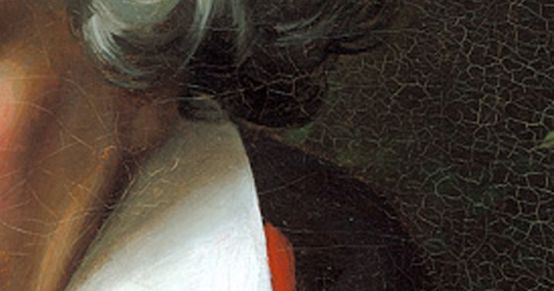Large fugue for piano four hands
Beethoven every Friday: to mark his 250th birthday, we take a look at one of his works every week. Today it's the Great Fugue in B flat major for piano four hands.

Originally composed as the finale to the 1825/26 String Quartet in B flat major op. 130 The Schuppanzigh Quartet's first performances of the fugue were met with incomprehension - even among connoisseurs. One reviewer found it "like Chinese", although it was acknowledged that the time may yet come "where that which at first glance appeared cloudy and confused is recognized clearly and in pleasing forms". In any case, Beethoven's Viennese publisher Mathias Artaria did not want to wait that long and approached the composer with a request to replace the fugue with another, more conventional movement (an extended rondo at the end). It took some persuasion and an extra fee before Beethoven reluctantly agreed to the request. Karl Holz, the quartet's cellist, later recalled: "He thought a lot of it on the joint and could only be persuaded to let her go with difficulty. from the string quartet to separate."
The usual name of this unquestionably monstrous sentence is deceptive: the Large joint is neither a composition in the sense of the stile antico nor of the kind that Beethoven had already composed in Bonn during his lessons with Christian Gottlob Neefe in Johann Sebastian Bach's Well-tempered piano had studied. Apart from the considerable technical difficulties, it is a radical, revolutionary development, so that Beethoven could rightly claim that the work was "tantôt libre tantôt recherchée" (sometimes free and sometimes bound). Igor Stravinsky even considered it "an absolutely contemporary piece of music that will forever be contemporary".
After the decision had been made to publish the fugue separately as opus 133, Mathias Artaria also approached Beethoven about a four-hand piano version, but he was initially unwilling to accept what he considered to be a rather technical work. However, Beethoven was so dissatisfied with an arrangement made by Anton Halm at short notice that he now produced an independent version himself with a separate opus number, formulating his demands to the publisher in his manuscript with a few half-joking, half-serious notes: "1=tens / Penale Penalty consisting / of 2 ClementiKlaviand 3 exquisite / impressions of the portrait / of L. v. Beethoven / 2=firstly, a fine / for this / and that as well as / other / 3=thirdly, the M. S. Manuscript of this excerpt / either honored / or returned to the author -"
Listen in!







